
Adapting to a Post Covid World: How Has Fitted Furniture Design Evolved?
4 tips to zone your home like an expert There’s no doubt that open...
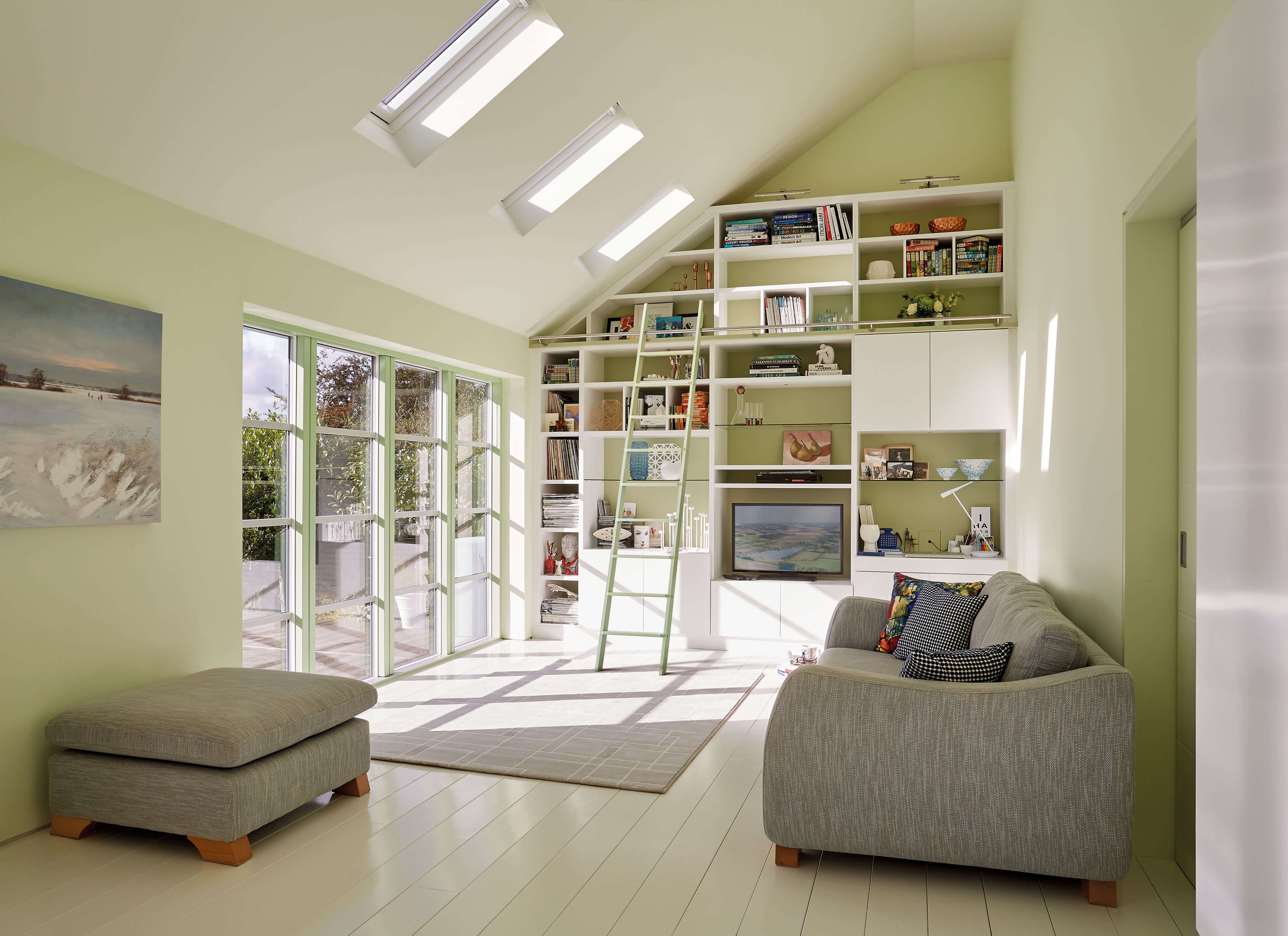
There’s no doubt that open plan living offers many valuable benefits, from improving light and spaciousness to increasing a sense of togetherness for families and guests. Equally, it has its downsides. With everything on view, spaces can quickly feel cluttered. Cooking smells travel, as does family noise.
Open spaces are harder and costlier to heat, now a crucial factor in any homeowner’s design decisions. And, with more of us now at home more often, the ability to find some privacy in our living spaces is priceless.
The answer is to add some of that separation back in. But how?
Fortunately, zoning your space (also known as broken plan) allows us to do just that, whilst also keeping the best of open plan life. Zoning your home effectively means splitting one large area into a series of “rooms without walls”, each smaller space designed for different activities and moods. The idea is to create living spaces that are more flexible, functional and comfortable.
To break up a space successfully, designers consider a wide range of interior elements and décor, so we turned to our experts to share their best advice. Here are their top 4 tips to help you zone your home like a professional.
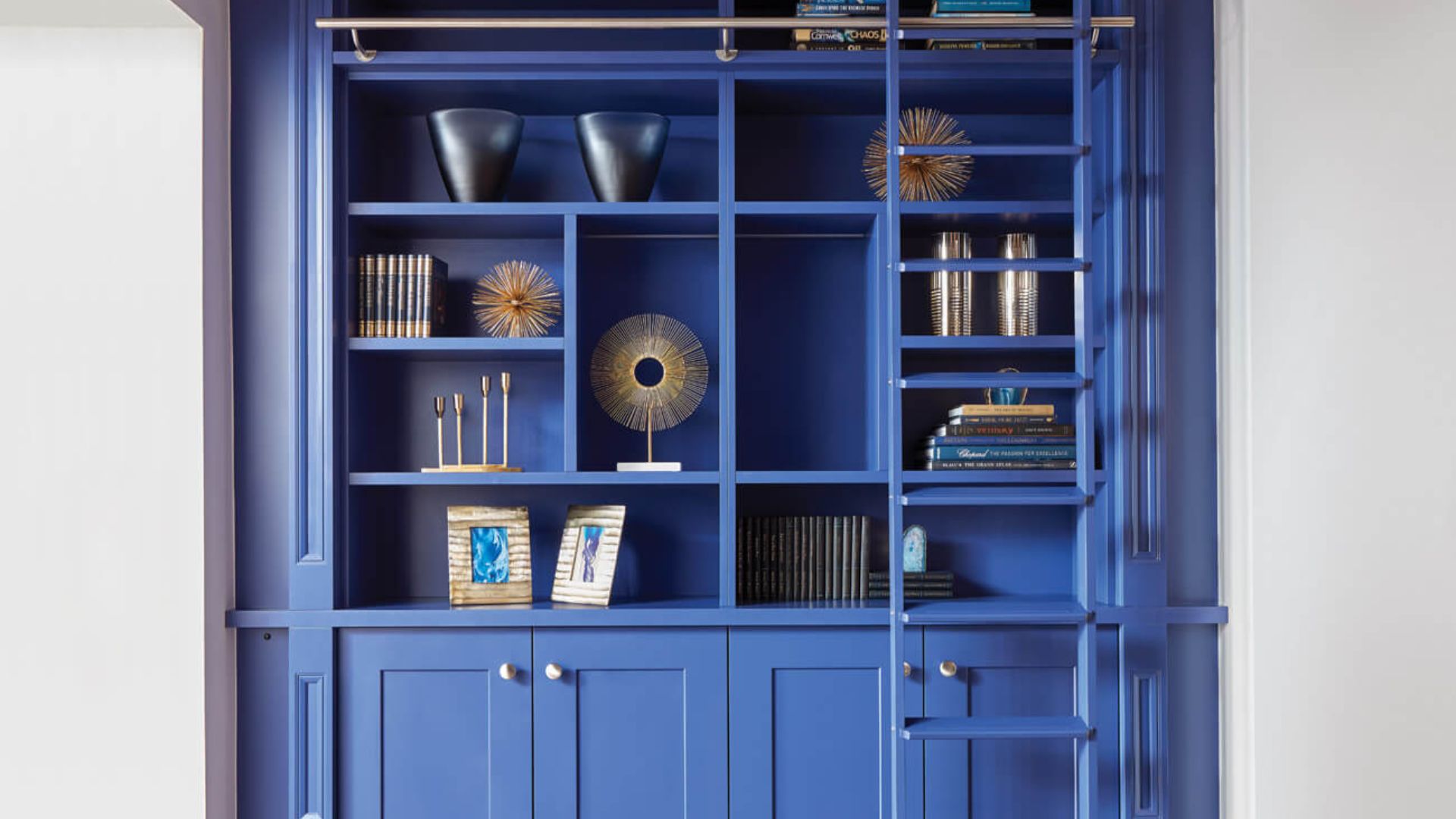
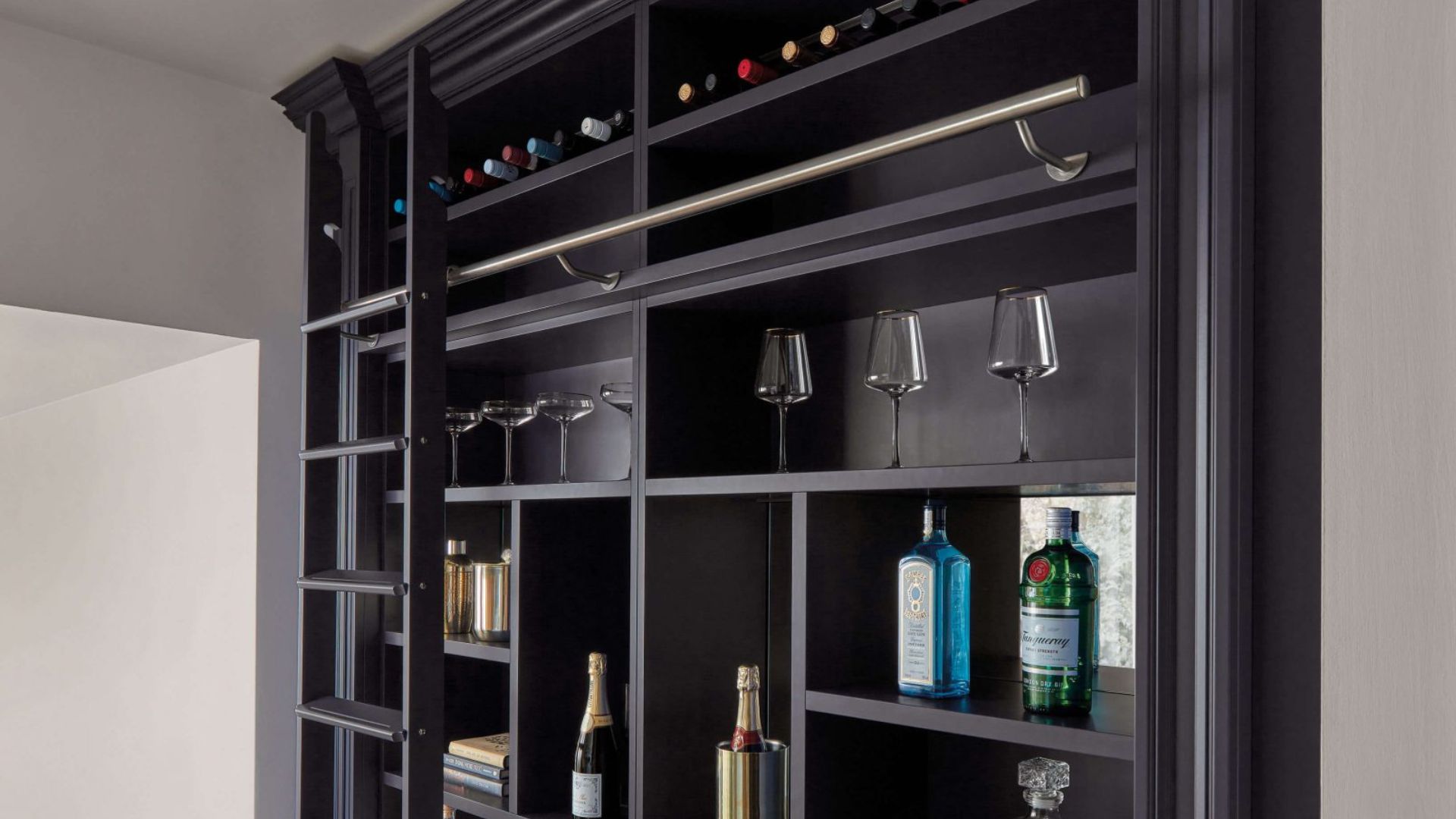
First, think about all the functions your family needs from your living space. To add experience value as well as functionality to your home, this is a good opportunity to look beyond the obvious (dining, lounge, work) and think about creating “compartments” for tranquility and relaxation.
For example, if your family contains one or more avid readers, a cosy library nook is a wonderful way to transform an unused corner or alcove. If you entertain regularly, incorporating a bespoke home bar can be a transformative addition to how you socialise at home. Or how about a mini media space?
The rise in personal streaming services has forever changed how we indulge our music and viewing tastes, so somewhere snug to watch or listen in private is a great addition to any family home – and may even keep those teenagers out of their rooms!
Rather than using freestanding furniture that you plan to replace in the short to medium term, why not consider investing in a fitted piece that will add beauty, function and value to your home for many years to come?
Bespoke cabinetry can be configured to fit any space like a glove, and interiors experts such as our talented designers can ensure you gain maximum storage without overpowering your room.
Add a tactile rug, a cosy chair and footstool, a handy side table and some soft task lighting and you have a beautiful retreat that will stand the test of time.
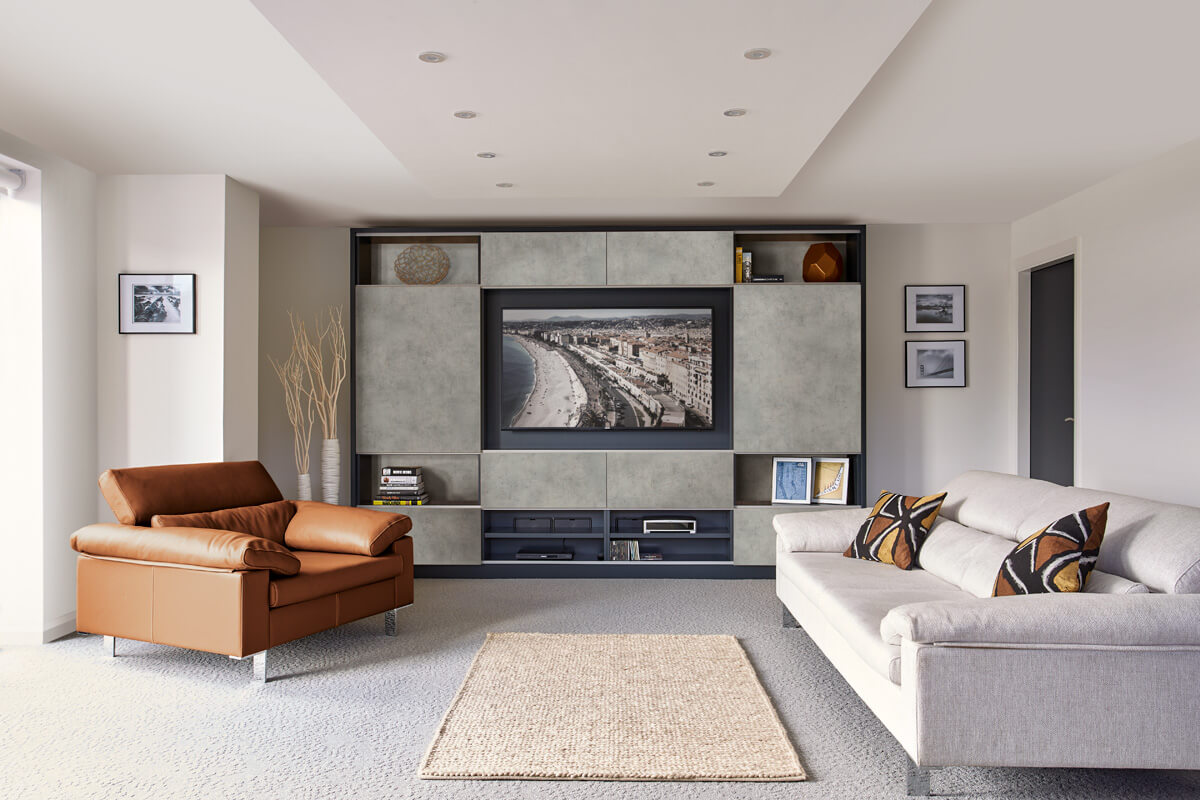
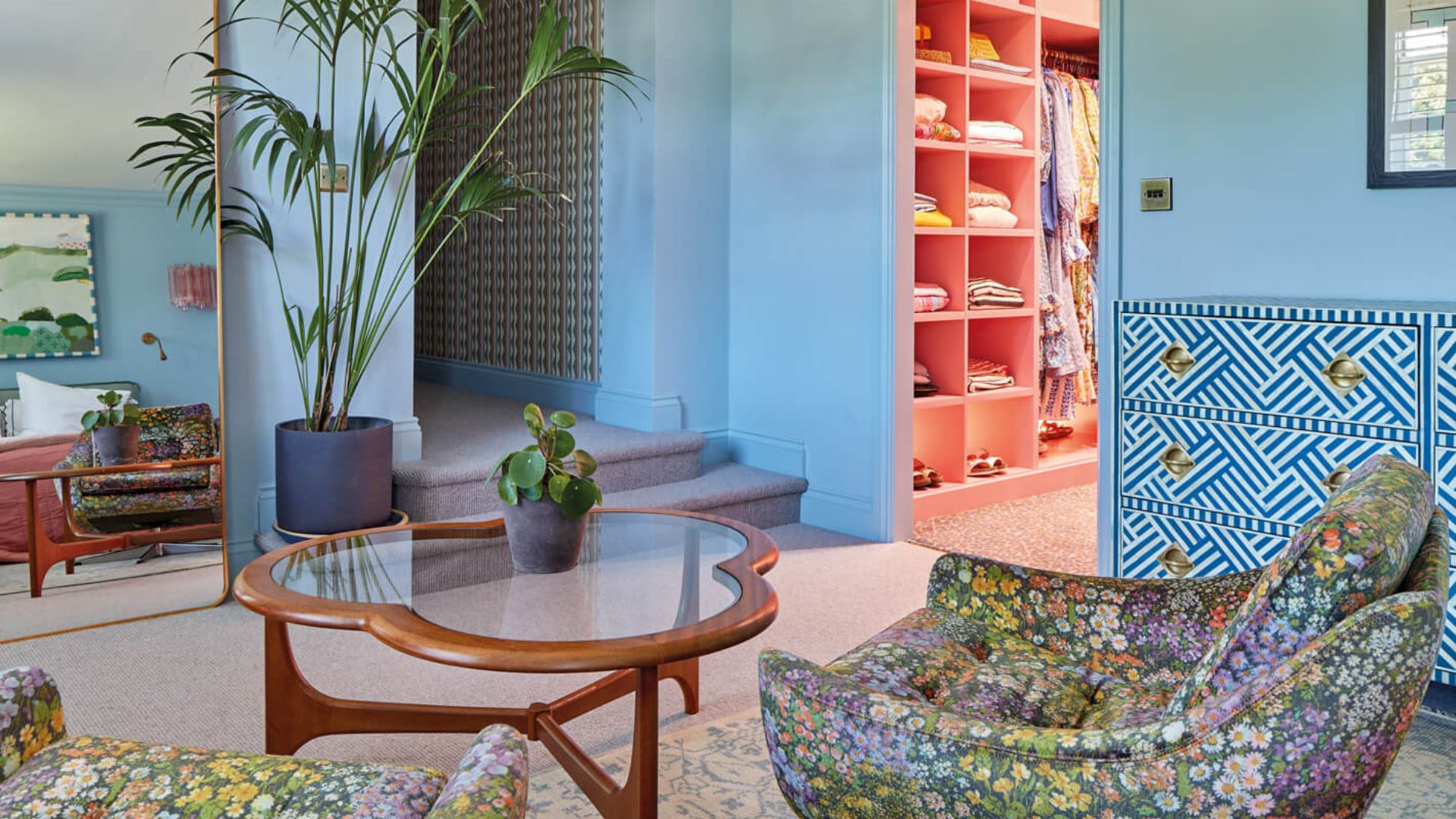
Using colour and/or pattern is one of the simplest and most effective ways to zone a space. Using different shades and prints on walls and floors creates an instant visual separation between areas, maintaining order, guiding movement and providing an easy flow for the eye.
It’s also a fantastic way to showcase your creative flair and add real personality to your home. The key to making colour zoning work is to keep elements of your colour choices running through each area, so that the scheme works as a cohesive whole.
A fine example of this is Erica Davies’ stunning bedroom, a masterclass in creative colour zoning. We were delighted to be chosen to design and handcraft the luxurious dressing room which sits to one side of the suite.
Erica is undoubtedly a colour lover! As she explained to Ideal Home, “I love neutrals in other people’s homes but they’re not for mine.” Having painted the main bedroom in a soft, calming blue, Erica wanted to introduce a surprising pop of colour into her bespoke dressing room.
“A piece of décor advice I’d offer is to make one big gesture.” – Erica Davies to Ideal Home
Erica worked with Simon Tcherniak, one of our Senior Designers, to choose joyful Coral Rose, an exclusive shade from our paint palette. Having drenched the entire dressing room in happy colour from cabinetry to ceiling, Erica has then picked the same shade out in the bedroom using carefully chosen accessories – cushions, bedding and decorative items – all of which combine to pull the look together beautifully.

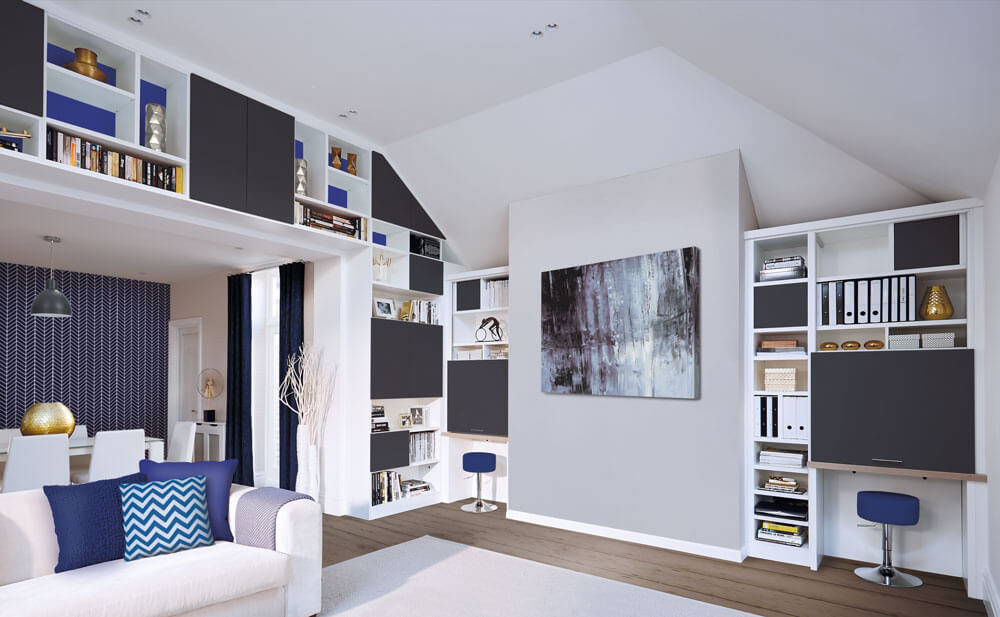
There are two other main structural elements to consider when zoning your living space – the first of which is your flooring.
Rugs are probably the simplest and cheapest way to mark out an area – the difference in colour, pattern and texture acting in the same visual way as paint or wallpaper to immediately split the space.
Or, if you’re changing the flooring itself, you can separate spaces by mixing different types of flooring – wood to carpet, or cork to tile, for example. The second is to physically separate the space by using dividers.
Giving you the flexibility to choose or mix heights, open shelving adds privacy without blocking light and makes a stunning focal point, putting all your favourite books and treasured items on display in the heart of your home.
Whether you incorporate your open shelving into another functional piece or place it beside or behind other furniture, what you’re creating is essentially a wall – with benefits.
Having covered the structure and core décor of the space, it’s time to think about your lighting. Lighting is the most subtle way to break up a wider area, but it still has a huge impact in terms of mood and versatility.
Interior experts advise that you layer lighting within any space, mixing the three types:
Within this, you can also mix cool and warm light – cooler shades being good for task lighting areas as they stimulate the senses, while warmer shades are great for restful spaces.
A wonderful option for both task and accent lighting is to build integrated lighting into your furniture. In fact, depending on the piece itself, you can include both in the same item.
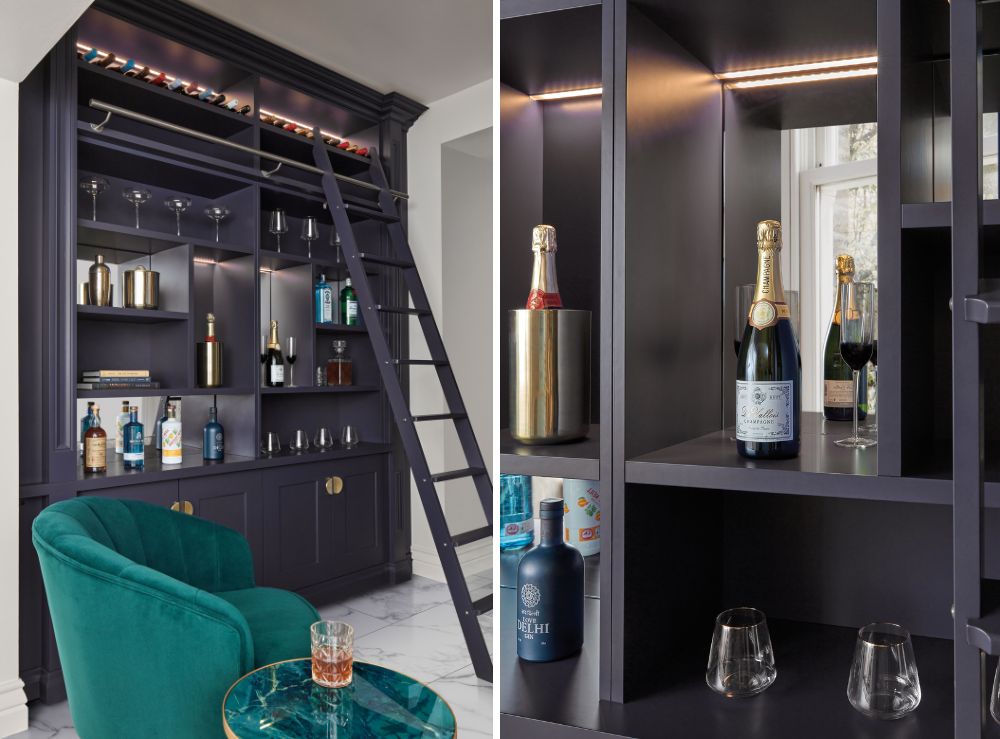
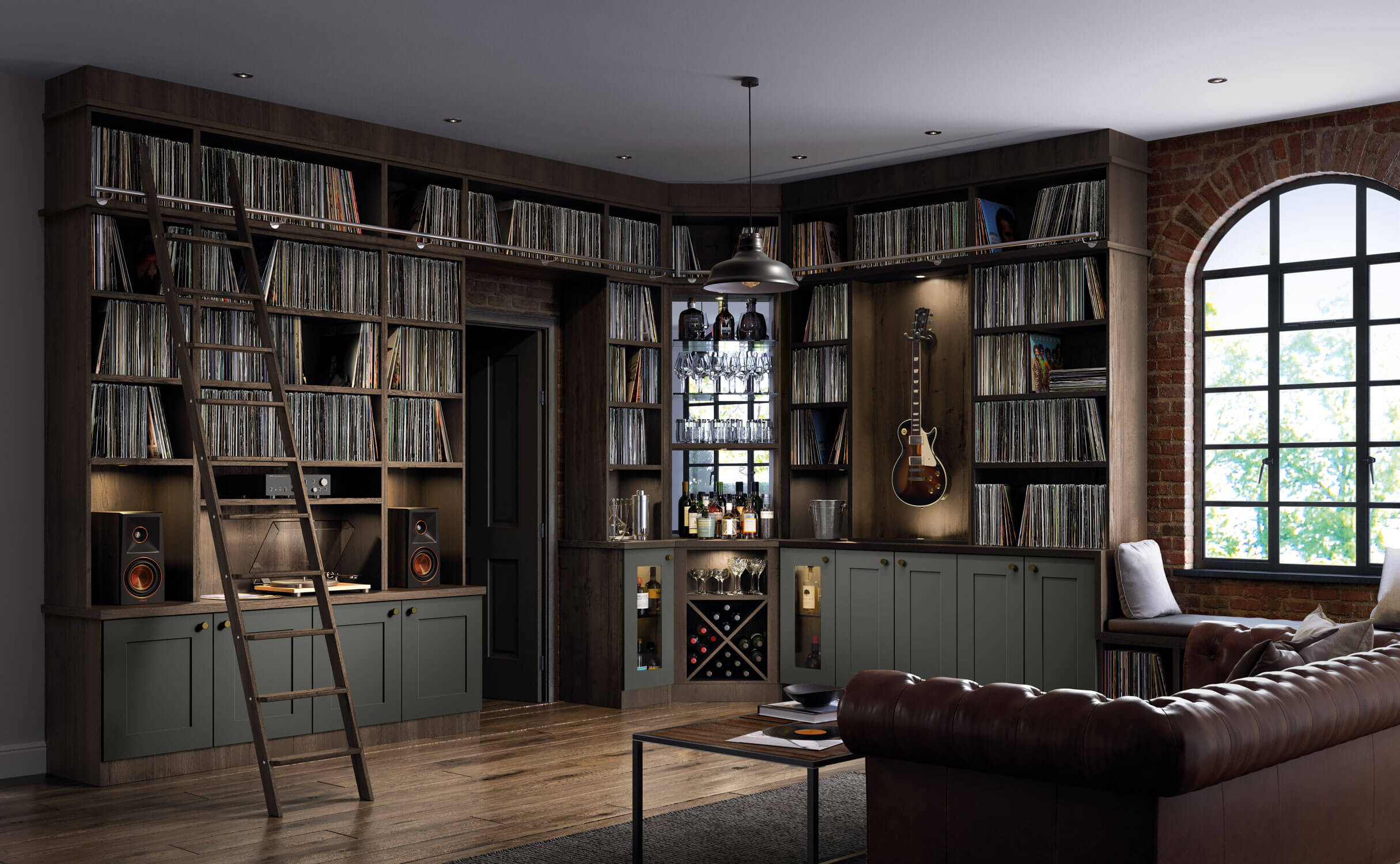
In this luxurious made-to-measure music room, the corner bar is softly lit from within, helping both to illuminate the cocktail mixing area and casting a gentle glow into the room to create the perfect ambience for relaxation and socialising alike.
Intrigued to see how our interiors experts can improve the flexibility of your living space? Click here to request a free, no obligation design consultation at a time and date to suit you.